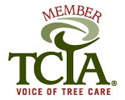Are all of the pine trees on our courses doomed?
Published in the “Heartbeat” Volume 40, No. 3 May 2008 – The Official Publication of the Heart of America Golf Course Superintendents Association
Are all of the pine trees on our courses doomed? Not quite, but we are loosing them very rapidly, the eventual culprit, pine wilt. Pine trees in our region are most susceptible to pine wilt because they are NOT native to our region. Drought and reoccurring storms continually stress trees, leaving them vulnerable to this devastating disease.
Pine wilt mainly affects Scots pines (Pinus sylvestris); the short (1”-3”) firm needled pine, but has also been found in Austrian (Pinus nigra), white (Pinus strobus) and a few other pine species rarely found on our courses. Pine wilt symptoms typically appear from August through December. The progression is rapid, the tree first wilting, and then rapidly dying. The needles turn yellow/brown, but remain attached to the tree. Progression may be uniform or move branch-by-branch through a tree, making it very difficult to diagnose. The main contrast to other pine diseases is the rapid decline and death of the tree, as compared to the gradual decline of trees such as those infected by tip blight.
Pine wilt is caused by the pinewood nematode (Bursaphelenchus xylophilus) and is spread tree-to-tree through the wood boring pine sawyer beetle (Monochamus carolinensis). Pine sawyer beetles emerge in late May and fly to stressed trees to feed under the bark and lay eggs. If the beetles are carrying nematodes, they enter the tree through the feeding wounds of the beetles and the decline process begins. Once inside the tree, the nematodes reproduce rapidly, clogging the water conduction system and quickly leading to the rapid decline and death of the infected tree.
Unfortunately, there is no guaranteed preventative or curative treatment for this disease. There is research being performed and some manufactures are starting to sell preventative treatments, but none are more than 70% effective. The best known prevention is to ensure your pine trees are healthy through proper watering, pruning and disease/insect control. If pine wilt is suspected and/or diagnosed, the trees and stumps need to be removed and wood disposed of immediately by burning, chipping or burying. This should be done before May to help reduce the risk of infecting surrounding trees.
What do we do when they’re gone? Start planting conifer varieties resistant to pine wilt. Some alternative are spruce, fir, juniper, arborvitae, bald cypress and eastern red cedar. More information on this disease can be found on the Kansas State University website (www.oznet.ksu.edu).
Bret Cleveland
ISA Certified Arborist MW-4393A





<< Home